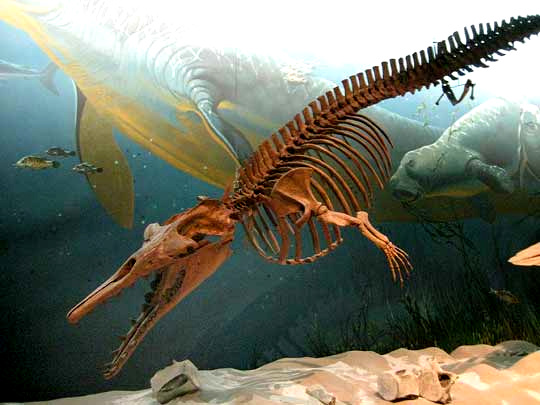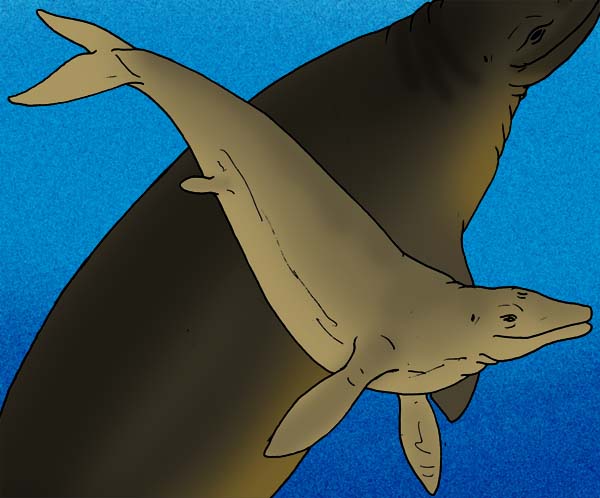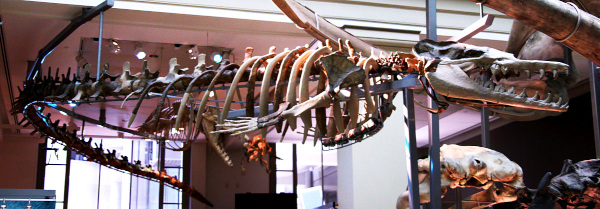
Yazoo County, in the swampy, steamy Delta Region of west-central Mississippi, by no means automatically brings to mind the mental image of whales slicing through warm, turquoise-colored waters in a tropical sea. Nevertheless, consider what was found eight miles south of Yazoo City, the county seat, where the Illinois Central Gulf Railroad takes advantage of a gap in the loess-capped bluff to the east and plunges through it.
The particular valley whose mouth forms this gap owes its presence to a stream called Thompson Creek, which runs by the hamlet of Tinsley. It's a fine little creek, the kind with sand and gravel in its bed, and in the gravel semiprecious stones can be found. On a certain day in 1971, members of the Mississippi Gem and Mineral Society were scanning Thompson Creek's gravel deposits when they discovered a whale.
 Reconstruction of Zygorhiza kochii; copyright free image by "Apokryltaros" via Wikimedia Commons
Reconstruction of Zygorhiza kochii; copyright free image by "Apokryltaros" via Wikimedia CommonsThis particular whale had been dead for around 38 million years -- since the late Eocene Epoch. The whale in question is known as Zygorhiza kochi, and now it is extinct. That's a skeleton of one at the top of this page, and a reconstruction at the left. Though Zygorhiza kochi was a relatively small whale, growing to only about sixteen feet, finding its wonderfully preserved fossil caused quiet a stir.
On March 12, 1981, the Mississippi State Legislature passed Senate Concurrent Resolution No. 557 designating the prehistoric whale as the official fossil of the State of Mississippi. Eventually this whale's fossilized bone would hang from the ceiling of the Mississippi Museum of Natural Science. Other partial skeletons of Zygorhiza kochi have been found in the same formation of sand, the Moodys Branch Formation, at Jackson.
There's more to be found in this area than old whales. Where the Moodys Branch Formation outcrops at Techeva Creek and the creek cuts through our bluff ten miles northeast of Yazoo City, paleontologist Sylvester Q. Breard, Jr. has discovered fossils of some twenty species of vertebrates, or animals with backbones. He's found sharks, fish, and more remains of our whale, Zygorhiza kochi, as well as eagle rays, Myliobatis. Among his most interesting finds have been a scapula and two teeth of another whale, this one the slinky Basilosaurus cetoides, whose bones are shown below.

Basilosaurus cetoides was truly a "sea serpent" of its time, with a four-foot head, a ten-foot body, and a forty-foot tail. You can get an idea of its dimensions below:
